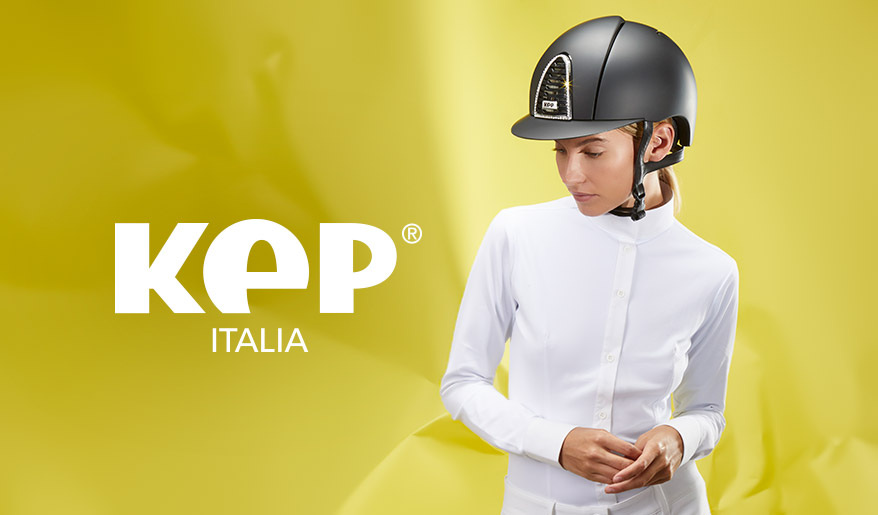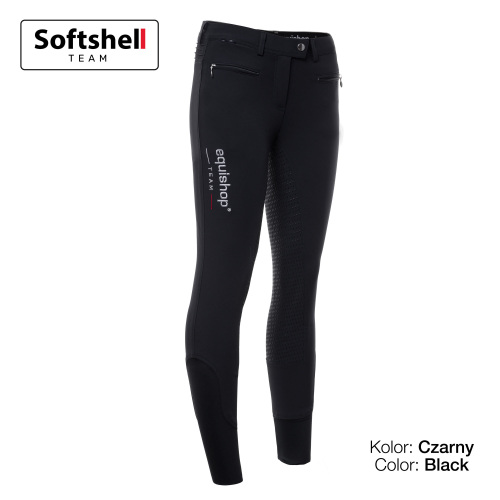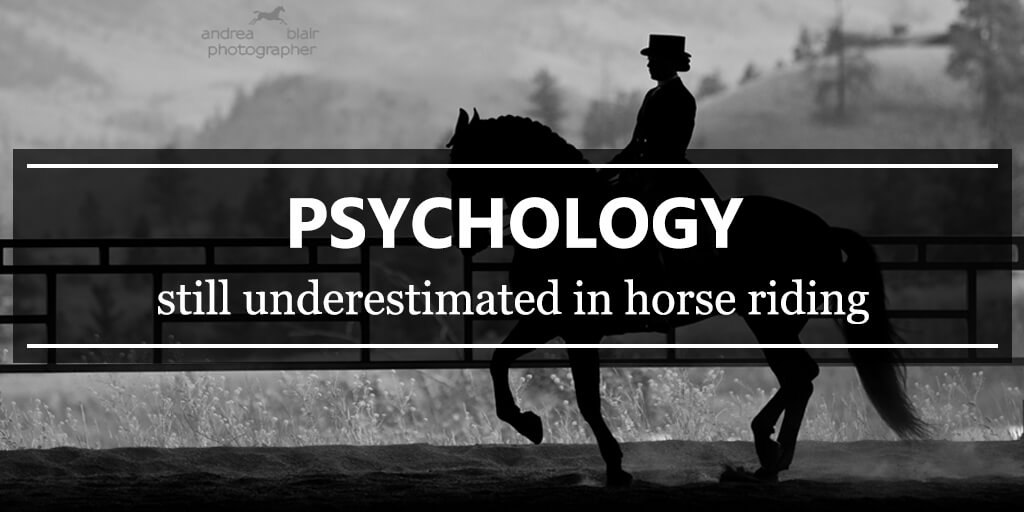
background source: phot. Andrea Blair Photographer
Not every rider is aware of how important psychology is in horse riding. Why? Because not many instructors mention it during training their charges. We learn proper posture, how to influence the horse with our bodies, but nobody explains how exactly the horse "works". Why does he react in this way, and not another? How does he see the surrounding world? Instead of using proven theses provided by science, we get to similar conclusions through many-years, everyday work in saddle and with the use of our intuition. But only a minor group of riders succeeds at this.
In the world of sport, science is a stimulus for development. Any innovations concerning human body are immediately adapted by coaches into their training methods. All for achieving better results. The exact same thing happens with sport equipment - very often small modifications and adjustments can determine success.
How does it look in horse riding? With this second field - technique, there is not much difference. Everybody tries to use technological development to their advantage - new boots, saddles or helmets that provide better security. But, when it comes to science and examination of human organism and, what is important - horse organism, the situation is strikingly opposite. Very few make use of new discoveries, on the basis of which they would change their plans or training methods. From several dozen of years we have been stuck. We are not talking about dieting or veterinary examinations' results. Nobody uses what animal psychology gave us - zoopsychology.
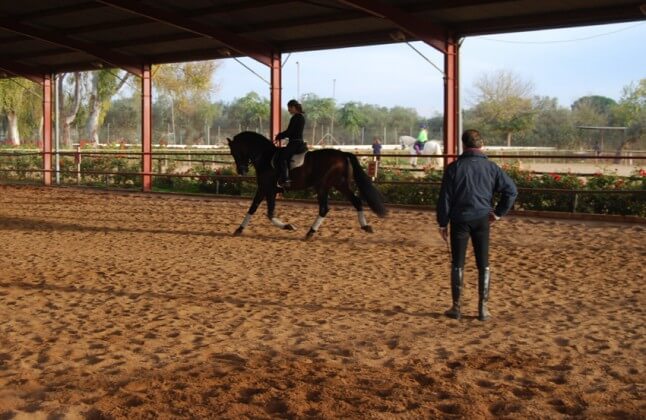
source: equitours.com
Everybody who used to practice sport knows that the most important thing is the sportsman's "head". In horse riding we have two of these - one of the rider and one of the horse. Each works completely different, differently perceive the world and reacts to particular signals. The horse picks up way more information and stimuli from the environment and reacts much quicker than we do. In addition, he never tries to understand a problem, so whenever he feels endangered, he runs away. Only later, being somewhere safe, he wonders why he got scared. We - people are capable of understanding relations between facts and are able to plan their consequences, horses - unfortunately - cannot.
The basis is the statement: in order for the horse to understand us, first we have to understand the horse.
Having this fundamental knowledge, you should analyse your behaviour and consider your training methods, especially in the context of "behavioural" issues with your four-hooved partner.
Stimulus affection time
A simple example: horse while cleaning jostles by taking a step into our direction. What do we do? We are absolutely outraged, we react with waving our hands, a slap on the shoulder, additionally expressing our dissatisfaction aloud. We think "the horse cannot forget the hierarchy and isult us like this!" True, the thought is correct, but it does not come along our reaction. The horse will not associate your reaction with his "reprehensible" behaviour. For him it would be an entirely new situation in which, not knowing why, the human acted aggressively, punishing him. In such case you should ask yourself: where were you, when the horse signaled that he wants to move towards you? Only then you should react so your actions would be clear and understandable for the horse. If you will react too late, at the moment when your horse has already decided and started acting, you can expect such conclusions "the human allowed me to move towards him/her so I do not have to respect him/her." It is good to realise that your actions after the fact" are seen by the horse as a brand new, completely separate situation. The animal is not capable of connecting the late stimulus with something that is already a past for him.
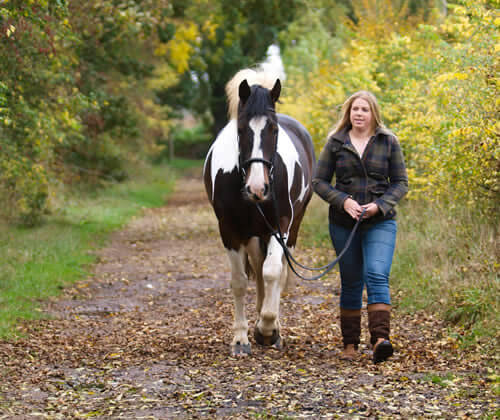
source: horsetricks101.com
A similar example is also a situation where your horse speeds up while riding without your command. Pulling the reins will also be acting "after the fact." You cannot expect your horse to understand that you mean that he cannot speed up on his own but stick to an even pace. For the horse a moment "after" means usually split second. At the moment when the horse feels the bit's pressure on his gums, meaning "slower" he does not remember that he changed the pace a moment ago. The rider is absolutely sure that he or she acted properly, while the horse has already learnt "I have been allowed to speed up so I can do it whenever I can."
And indeed, the situation will repeat - your horse will speed up more often and you will slow him down harder and more aggressively. You will be frustrated and irritated by the situation in which "your horse does not listen to you" and your four-legged friend will run away more and more. Soon the time will come for sharper curb bits and any possible side reins that would serve helping "controlling" the insensitive muzzle and speeding horse.
Remember that your horse is not afraid to carry you. He is only afraid of your reaction "after" the carrying. The only thing you can do in such case - is reacting at the exact moment when your horse makes the decision of speeding up.
Examples of this types are countless - horse, before he decides to turn towards the manage's centre, riding off from the track by a fence always let us know what he is going to do. How? His body "looks" where he wants to go - the animal always turns his head or ears (or one ear) in the direction he is heading. If you start to closely watch your horse, soon you will start to understand and notice those signals, and what is more - you will start to "feel" them without using your vision.
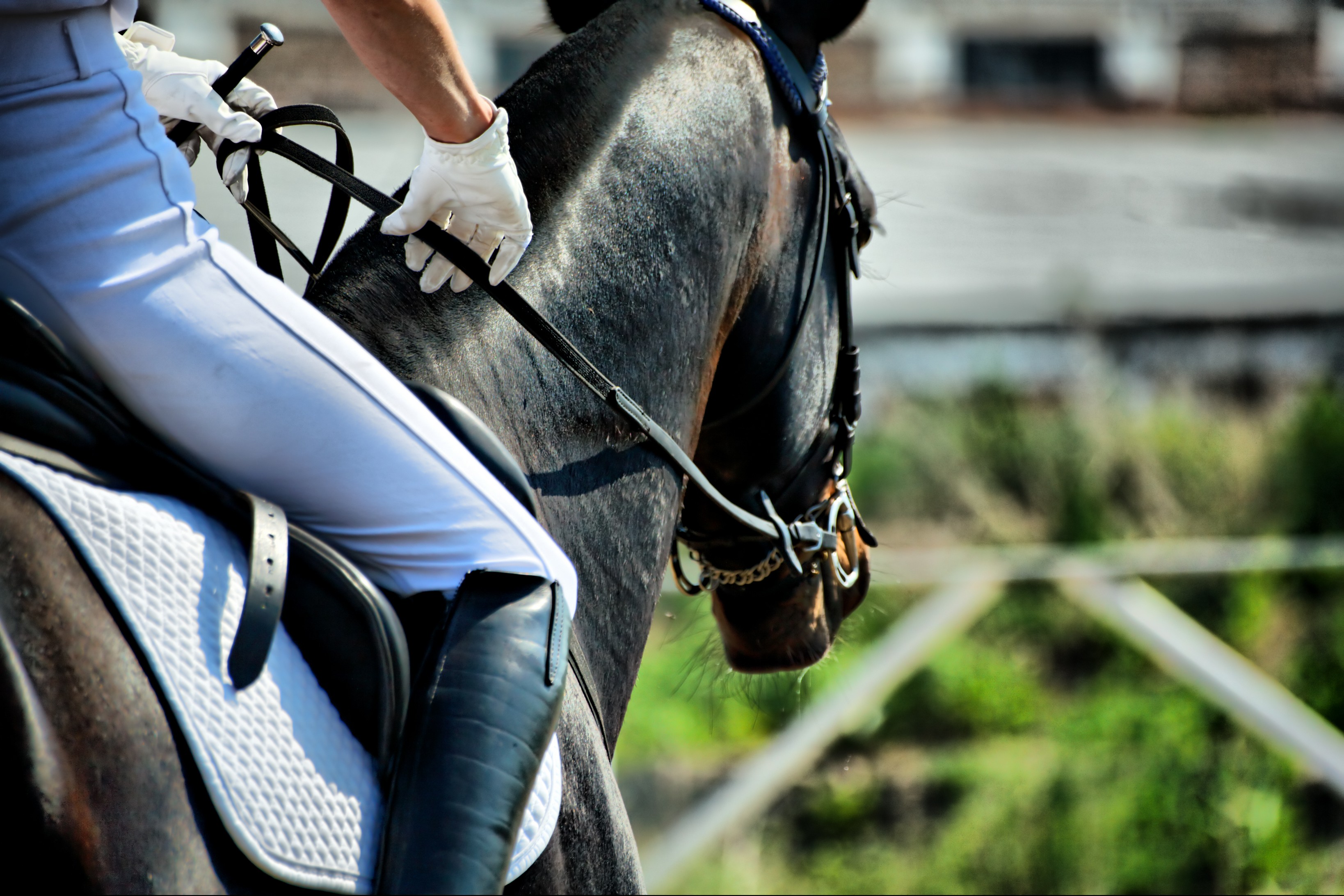
source: shutterstock.com
How to obtain proper reaction?
The horse's training is based on the exact same schema as teaching other animals (e.g. dogs): stimulus - desired reaction - reward. Why did we not mention punishment? Because punishment is never a good motivation for the horse. Remember that a sufficient punishment for the horse will be lack of reward.
How such training should look like? Let's take something very basic - teaching your horse how to shift from stop to a walk. It is a stage which every horse who start working with a rider in saddle on his back has to experience. It is one of the most crucial exercises. Why? Let's talk about an exemplary situation to learn that:
A young, completely raw horse patiently stands in one place. You want to ride at a walk, so you give him a calf. Seems simple, but most of us makes the same mistake. After giving the horse a clear signal, we wait for reaction, but nothing happens. Thus, you give him a calf once more, but stronger. The horse still does not react, still stands in the same place. So you shift your calf slightly backwards and push stronger once more, pulsating. At last the horse moves. You are happy because the animal finally understood what you wanted from him. That is true, the horse did understand, but not exactly in a way that would satisfy you. Your horse built such association "I wait for a really strong and energetic calf, I can ignore those milder signals as they mean nothing." In this way you are raising a steed that will be insensitiveto aids and riding on his back would be far from pleasant.
Remember that the calf signal has to be firm and short, but it does not mean it has to be strong. It is better to acquaint the horse on a lunge to voice commands at the beginning of training, so in such situation, along with action of your calf you would be able to use a known command. That will help the horse to connect the dots: calf = "go" command = ride at a walk.
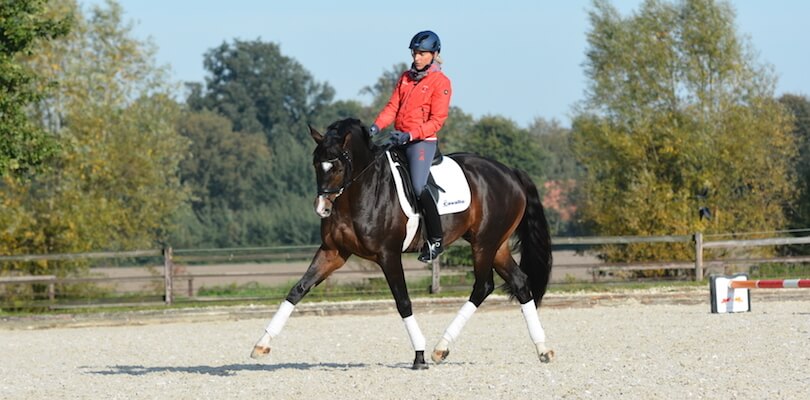
source: pferdiathek.tv
Situation with starting a horse who is sluggish or slightly phlegmatic looks similarly. You put your calf to the horse, he reacts immediately, but in your opinion, he moves too slow. You want him to start slightly more energetic, so you give him a stronger calf or even use a whip simultaneously, when the horse is already moving at a walk. The horse is getting this signal "after the fact" because he is already moving. There is no point in thinking that punishment at the moment of proper reaction to a signal would enhance the positive reaction. Moving was a proper reaction, which you did not reward. If you think it was too slow - do not count that a young horse, who is in the beginning phase of his training will be capable of understanding that. You have to be patient and praise him for a mere stirring of the reaction he was asked. The animal will understand what you mean and he will become sure that his reaction is correct. Only then - when the horse has the proper reaction established (calf = movement), can you, without strengthening the calf, ask him to walk quicker. How? It would be enough if after moving from one calf signal in split second you put the calf to him again. It would be a clear signal for your horse due to which you will obtain the desired pace and gait energy.
Starting from a stop at a walk seems to be one of the simpler exercises, but as the example above shows - in fact it is not. Imagine how many mistakes can you make while much more complicated exercise. One of the most common rider's mistake is performing an excercise for too long - too many repetitions or constant "raising standards" for the horse. Many of us do not know when to let go in order to successfully finish training.
For example: you ask your steed to perform a task. He does it properly at the fourth attempt. Performing it for the fifth time is risky, but if you know your horse's physical abilities very well, you can let yourself to it. Sixth, seventh or tenth repetition will have the exact opposite effect. It will not "reinforce" positive reaction. As the horse loses energy and interest in the exercise, performing it on less and less satisfying level. At last you feel your horses exhaustion, so you finish training and let him rest. From the physiological point of view - correct, but from the psychological - you make a mistake. Why? Because the horse got a reward (rest) for performing the task worse than he can.
Thus, it is worth finishing exercise after one properly performed repetition that drag it out. It is better to reinforce positive reaction at the horse through many trainings than to try to achieve and "perpetuate" something during one lesson.
Rewarding the horse
Reward is the last element of our three-stage training (stimulus - desired reaction - reward). In order for rewarding to make sense and have positive reaction of your animal, it has to be done in the right moment. When? During properly performed exercise, never after. The most positive and immediate reward is not patting or scratching. Usually the most effective is giving the reins to the horse, maybe additionally your voice. While, if you do not want to say anything, the horse has to know that this is a positive reaction - you can obtain this on a lunge.
Why does the horse need reward? It reinforces the horse's will to cooperate and achieve common goals. It also helps fulfiling the purpose of each ride - the horse is supposed to leave manage satisfied so the next day he would come back and work even keener.
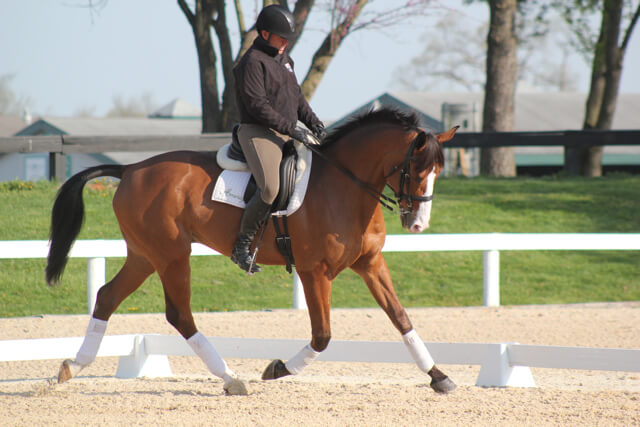
eventingnation.com
Punishing the horse
Everybody knows that violence is a sign of weakness and helplessness. We differentiate several kinds of violence and each and every is destructive for the training process and does not bring any positive effects. The horse does not understand punishment which is based on violence. The animal panics and tries to run away from the upsetting situation.
To demand from horse more than his physical and mental abilities allow him to do is to be violent. It is a commonly made mistake by riders who want to achieve an impossible goal. For example: a buyer is coming tomorrow, who is interested in our raw 4-year-old, I have to jump him!
Lacking awareness that the horse is capable of absorb only one stimulus at a time is also being violent. "At a time" means usually split seconds. What it is supposed to mean is that you should not use your calf and the reins simultaneously, but communicate those signals separately, even a moment one after another. Why? At the moment when you use both aids at the same time (e.g. the aforementioned reins and calf) the horse will pick only the stronger one. The stronger signal will obscure the weaker one.
Using other aids than those necessary is also being violent. For example: overusing the whip/reins - constant use of sharply working curb bits, various types of innovations without knowing how to use the... Such examples are countless. Why would you "shout" at the horse, using force, while you can "whisper" to him? You are making the work with your horse difficult for yourself. How your horse reacts to strong stimuli is only up to you. Sometimes we forget how sensitive the animals are. Those who do not believe should ask themselves: how does a horse on whom a fly sat react? Even a child will answer that he uses his tail to get rid of it, tramps or causes his skin to "vibrate". If he tries to get rid of it, he has to feel it, right? His jaw is just as nervate as his skin. So what kind of pain to the horse causes a rider who stops his horse by acting both-handedly on his muzzle and using his body baulking in the stirrups like a lever?
There is no possibility for the horse, who is for example being bitten, to think "It hurts and I'm terrified. It must be because I didn't give my best to the last exercise." Such thinking is absurd and does not lead to anything good.
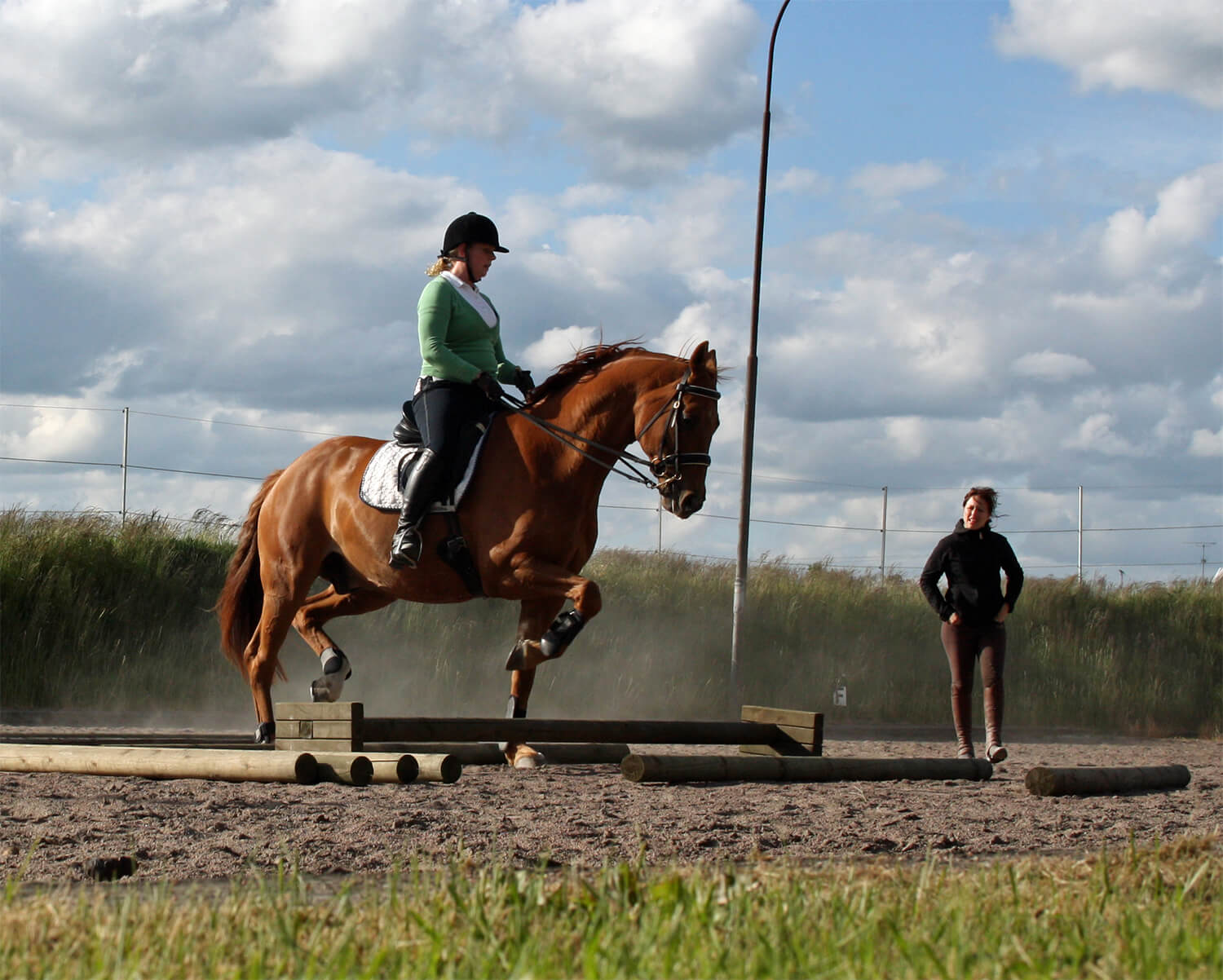
source: charlottewittbom-com
It is impossible to completely avoid stress in the training process. Stress can be a positive motivator and it is necessary for the proper development of both horses and people. Such stress is felt by the horse at the moment of being punished. As we agreed before, punishment does not mean violence. The best punishment for the horse is usually lack of reward. However, sometimes, in order for him to understand his mistake, he has to feel our actions as unpleasant and this equals punishment for him. For example a slight pat of whip does not have to hurt in order to be correctly understood by the horse.
Unfortunately, punishment - even though it is sometimes necessary - is usually overrated by riders. Why? Because in opposition to reward, we can see its effects immediately. Most of the riders do not remember that punishment causes the horse to quit, resign from action or avoid something. It should be used only when the horse does something incorrect that you do not want him to do at all. Punishment will not improve the quality of extended trot, but it can help when the horse tries to rear or wants to turn back or change direction on his own. However, you have to remember that punishment, just as reward has to be given at the right moment. Punishing the horse when he has not done anything yet, but he is about to do something - for example you can feel that he is trying to rear. Slight pat with a whip and additional calf so the horse will move more energetically will help you get out of that situation. Punishment, help or reward will never work "after" the fact.
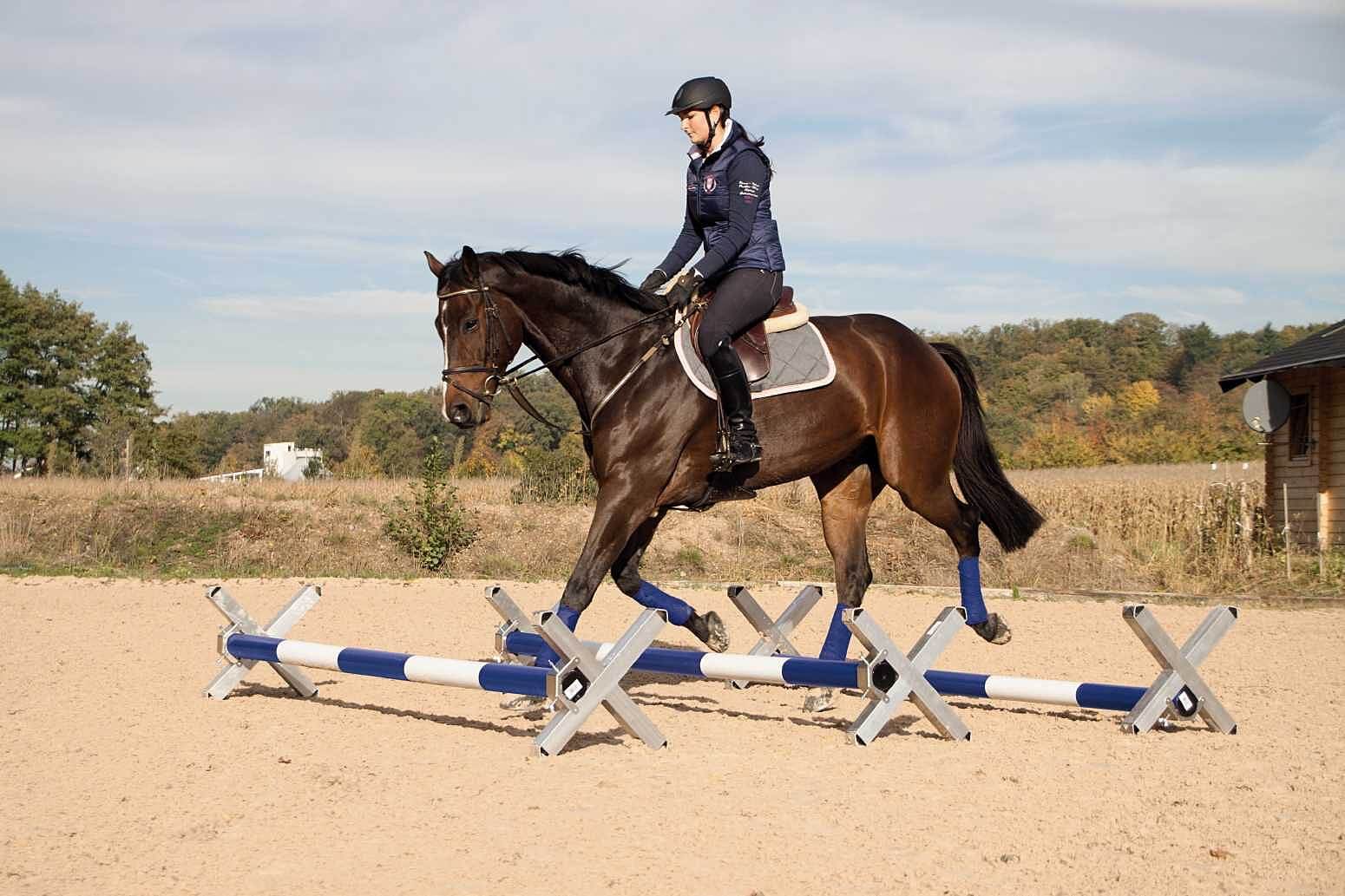
source: kraemer.de
Most of the presented facts can seem obvious to you. However, it is enough to take a look at training arenas in stables, or competition warm-up arenas and soon it seems that all those statements are completely unknown to the riders. The lower the rank of competitions the more visible it is.
It is worth realising some of the above facts so it bears upon the quality of your communication with the steed and thus - on your trainings' quality :)






